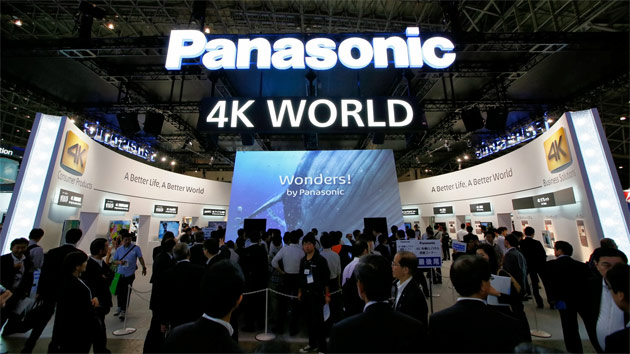Call it 4K or (usually more correctly) Ultra HD (UHD), higher-than-high-def capture and display technology was highly touted in Tokyo last week, with the CEATEC Japan 2013 IT and electronics show in full swing.
Panasonic went all out to promote UHD for both consumer and pro applications in a giant booth display under the "4K World" banner. A VariCam 4K prototype was on display next to a little "Please do not touch" sign, in a configuration that didn't seem much different from its debut on stage at the company's NAB 2012 press conference. That camera is due sometime in 2014.
And, perhaps taking a cue from Sony's recently announced sub-FDR-AX1 Ultra HD Handycam, Panasonic showed a rough mock-up of a prosumer-style Ultra HD camera. Maybe we'll hear more about that one at CES.
In other pro video exhibits, Panasonic brought along its new 31-inch 4K LED monitor, the BT-4LH310, which is now slated for release in December. It has a max 4096×2160 resolution and covers 96 percent of the DCI P3 color gamut. Little information was provided about a display of three 55-inch 4K OLED panels. Panasonic said they were made using a new, more cost-effective manufacturing technique, but it seems likely that those will also find their first customers in the professional market. (Sony was also exhibiting at the show, and it had its own 56-inch OLED prototype screen on display.)
Also showcased in the booth were Panasonic's new 4K Viera screens, a 4K 20-inch Toughpad tablet, and the DIGA DMR-BZT9600, a 4K Blu-ray Disc player that upscales HD video to UHD using something Panasonic calls "Master Grade Video Coding" to improve color gradient performance.
Here's the rub: within a decade or so, even UHD might seem quaint. Japanese broadcaster NHK used the show to reaffirm its commitment to broadcasting the 2020 Tokyo Summer Olympics in its Super Hi-Vision 8K format (7680×4320). Broadcasters and others who are currently considering making investments in 4K capabilities might just decide to wait and see what happens before committing themselves.
Photos courtesy Panasonic.

8K all the way baby. Although I heard 16K might be coming in the next year or 2.